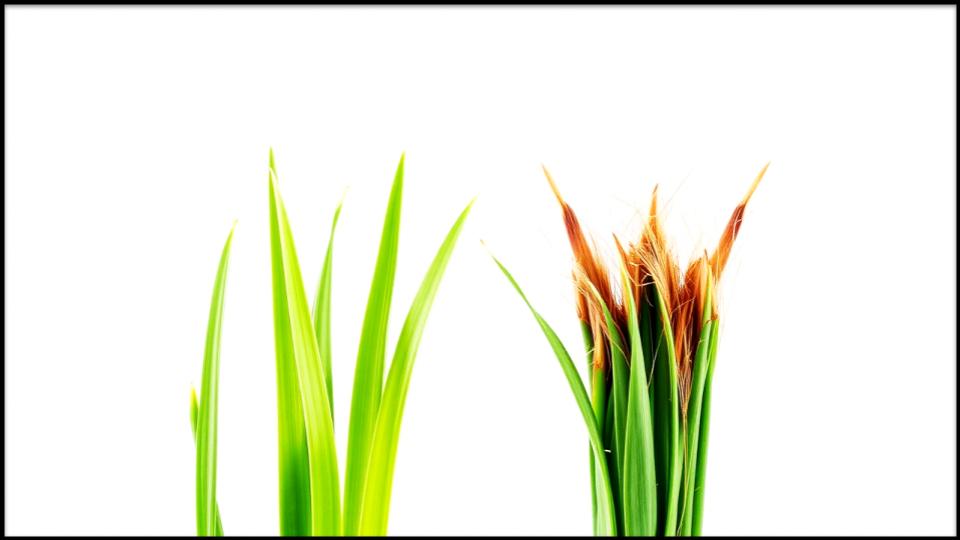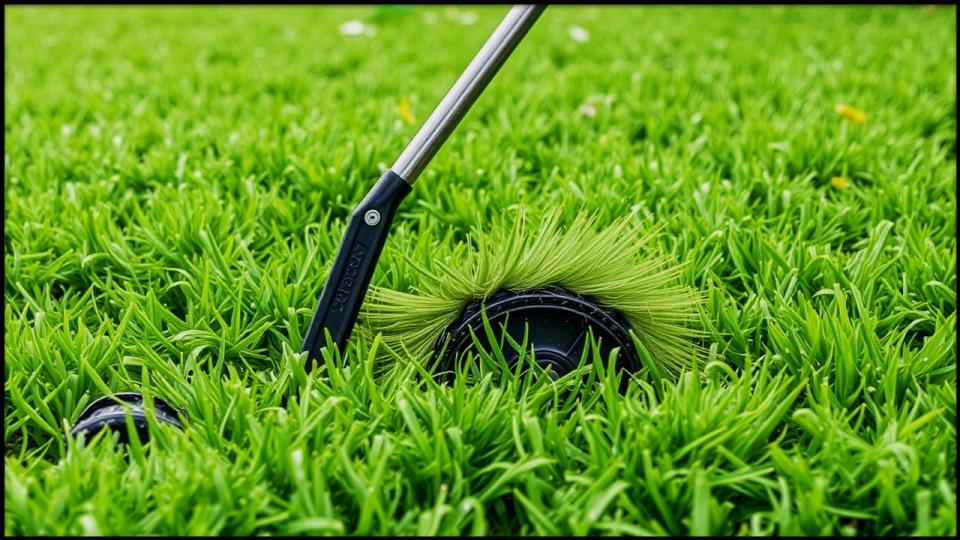
A pristine, velvety lawn is the quintessential backdrop for a beautiful home and garden. It’s the green canvas upon which we host summer parties, play with our children, and enjoy quiet moments of reflection. Yet, achieving this ideal can feel elusive, with mysterious brown patches and ragged edges appearing despite our best efforts. The culprit is often not a lack of care, but a series of small, overlooked lawn care mistakes. Surprisingly, many of these issues trace back to one essential tool: your mower blade. Using dull mower blades or making other simple errors can be the primary reason your lawn looks stressed and messy instead of lush and healthy.
This guide will illuminate the most common—and correctable—mower blade mistakes. We’ll move beyond the basics to give you the expert insights needed to transform your mowing routine from a chore into a foundational practice for cultivating a truly beautiful landscape. Let’s get you on the path to a healthier, more resilient lawn today.
Quick Tips for a Healthier Cut
Short on time? Here are the essentials for a perfect mow:
- Feel the Edge: A sharp blade feels like a good kitchen knife. If it’s rounded or nicked, it’s time to sharpen.
- Mow High: Taller grass (3-4 inches) promotes deeper roots and a more resilient, healthy lawn.
- Clean After Use: A quick scrape after mowing prevents disease spread and corrosion.
- Never Mow Wet: Mowing a damp lawn tears grass, clumps clippings, and compacts your soil.
1. The Cardinal Sin: Mowing with Dull Mower Blades
The single most destructive thing you can do to your grass is to mow it with a dull blade. Think of your mower blade as a pair of scissors for your lawn. A sharp blade makes a clean, surgical cut, allowing the grass to heal quickly and efficiently. In my own garden, I make it a habit to check my blades at the beginning of each season and at least once mid-summer.
When the blade is dull, it doesn’t cut; it rips, tears, and bludgeons the grass. This violent shredding action creates ragged, frayed tips on each blade of grass. These torn ends are an open invitation for fungal diseases and pests to move in. Furthermore, the bruised tissue struggles to recover, often turning a whitish-brown or yellow a day or two after mowing, giving your entire lawn a tired, unhealthy appearance. According to the University of New Hampshire Extension, a clean cut helps the plant conserve water and heal faster, reducing stress and promoting vigorous growth.

The Fix: Commit to a sharpening mower blades schedule. For most homeowners, twice a season is sufficient—once in the spring and once in mid-summer. If you have a very large lawn or thick grass, you might need to do it more often. You can have them professionally sharpened or learn to do it yourself with a file or a blade sharpening attachment for your drill.
2. The Scalping Cut: Mowing Too Low
There’s a persistent myth that cutting grass very short means you can mow less often. Unfortunately, this practice, known as “scalping,” is incredibly stressful for the turf. Each blade of grass is a leaf that performs photosynthesis, converting sunlight into the energy it needs to grow strong roots. When you cut off too much of the blade, you severely hamper the plant’s ability to feed itself.
A common mistake I see is homeowners lowering their mower deck all the way down, especially at the start of the season. This shocks the grass, depletes its energy reserves, and exposes the soil to a barrage of sun, allowing weeds to germinate and take hold. A taller cut creates a denser canopy that naturally shades the soil, keeping it cooler and suppressing weed growth. Taller grass also develops deeper, more drought-resistant root systems, a key component of a resilient and healthy lawn.
The Fix: Follow the one-third rule. Never remove more than one-third of the grass blade’s total height in a single mowing. For most cool-season grasses like fescue and bluegrass, a finished height of 3 to 4 inches is ideal. For warm-season grasses like Bermuda or Zoysia, a slightly lower height of 2 to 2.5 inches is often preferred, but you should still never remove more than a third at once. Adjust your mower deck accordingly and stick to it.
3. The Wrong Tool for the Job: Using a Mismatched Blade
Many people assume that all mower blades are created equal, but this couldn’t be further from the truth. Using the wrong type of blade for your mowing style or grass type can lead to a messy finish and poor lawn health. The three primary types are:
- High-Lift Blades: These are designed to create powerful upward suction. They are perfect for bagging clippings, as they propel the cut grass efficiently into the collection bag, leaving a very clean look. However, they can create too much lift in dusty conditions and demand more from your mower’s engine.
- Mulching Blades: These blades have a more curved, complex shape. They are designed to cut the grass clippings into tiny pieces and drop them back onto the lawn, a practice called “grasscycling.” As noted by the U.S. Environmental Protection Agency, these clippings act as a natural fertilizer, returning nitrogen and other valuable nutrients to the soil.
- Standard (or Combination) Blades: These are the jack-of-all-trades, offering a balance between lifting for bagging and discharging clippings from the side. They are the most common blade found on new mowers.
Using a high-lift blade when you want to mulch will result in clumping and an uneven look. Using a mulching blade when you want to bag will be inefficient and leave clippings behind.
The Fix: Choose the blade that matches your routine. If you bag your clippings for a pristine, formal look, a high-lift blade is your best choice. If you prefer the eco-friendly, fertilizing benefits of mulching, invest in a good set of mulching blades.
Tools for Blade Maintenance
Keeping your blades in top condition is a simple project. Here’s what you’ll need:
TOOLS AND MATERIALS BOX:
- Wrench Set: To safely remove the blade bolt from your mower.
- Work Gloves: For protecting your hands from sharp edges and grime.
- Wire Brush: Essential for scrubbing away caked-on grass and rust.
- Mill Bastard File (10-inch): The classic tool for putting a sharp, clean edge on a blade.
- Blade Balancer: An inexpensive but crucial tool to ensure your blade spins without vibrating after sharpening. ]
4. The Shakedown: Installing an Unbalanced Blade
After taking the time for sharpening mower blades, there’s one more crucial step that is almost always forgotten: balancing. A mower blade spins at thousands of RPMs. If one side is even slightly heavier than the other, it will create a violent vibration. I’ve heard from many gardeners whose mowers started “shaking uncontrollably,” and an unbalanced blade is almost always the cause.
This vibration doesn’t just make for an unpleasant mowing experience; it can cause significant damage. It puts excessive wear on the mower’s engine shaft and spindle bearings, leading to costly repairs. More importantly for your lawn, the wobbling blade cannot make a clean, level cut, resulting in an uneven, choppy finish.
The Fix: Always balance your blade after sharpening. A simple blade balancer is a small, cone-shaped tool that costs only a few dollars. Place the center hole of the blade on the cone; if it lists to one side, that side is too heavy. Simply file a little more metal off the heavier end (not the cutting edge, but the duller, thicker back edge) until the blade sits perfectly level.
5. The Dirty Secret: Working with a Clogged Blade & Deck
A clean machine is an effective machine. At the end of each mow, the underside of your mower deck is likely caked with a damp mixture of grass clippings, dirt, and sap. Leaving this debris in place is one of the most common lawn care mistakes.
First, this buildup can trap moisture directly against the metal blade and deck, accelerating rust and corrosion. Second, the hardened clumps can impede the blade’s rotation and obstruct the airflow needed for proper mulching or bagging. Most critically, this caked-on organic matter can harbor fungal spores and bacteria from diseases like brown patch or dollar spot. The next time you mow, your blade becomes a perfect vehicle for spreading these pathogens across your entire healthy lawn.
The Fix: Make cleaning a part of your post-mowing ritual. After ensuring the mower is off and the spark plug is disconnected for safety, tip the mower on its side (air filter side up). Use a putty knife or a wire brush to scrape the deck and blade clean. A quick spray with a hose and a wipe-down is even better. This five-minute task pays huge dividends in lawn health and tool longevity.
6. The Bad Timing: Mowing a Wet Lawn
Mowing a wet or even dewy lawn is always a bad idea. Waterlogged grass blades are heavy and limp, and they don’t stand up straight to meet the mower blade. Instead of a clean slice, the blade will often push them over or tear them, resulting in a ragged and uneven cut.
Beyond the poor cut quality, mowing wet grass creates a mess. The clippings clump together, dropping in heavy, suffocating mats on your lawn that can kill the grass underneath. These clumps also clog the mower deck and discharge chute instantly. Furthermore, walking on and rolling a heavy mower over wet soil can lead to significant soil compaction, which restricts the flow of air, water, and nutrients to the grass roots. As I often advise, patience is a gardener’s greatest virtue, and this absolutely applies to waiting for the lawn to dry.

The Fix: Be patient and mow only when the grass is completely dry. The best time to mow is typically in the late afternoon or early evening, after the morning dew has evaporated and before evening moisture sets in. This not only ensures a cleaner cut but also gives the grass a cooler, lower-stress period to recover overnight.
A Commitment to a Cleaner Cut
The pursuit of a beautiful lawn is a journey of many small, deliberate actions. As we’ve seen, the health and beauty of your turf are inextricably linked to the condition and handling of your mower blade. By avoiding these six common mistakes—from the destructive habit of using dull mower blades to the simple misstep of mowing at the wrong time—you are not just cutting grass; you are actively cultivating a healthier, more resilient ecosystem.
Think of sharpening and balancing your blade not as a chore, but as a ritual that honors the effort you put into your garden. A sharp, clean, and correctly used blade is your greatest ally in achieving that lush, green carpet you envision. With this expert knowledge in hand, you are now fully equipped to make every mow a step toward a more beautiful lawn.
Read More
These 15 Garden Water Features Will Make You Fall in Love with Your Garden Again
